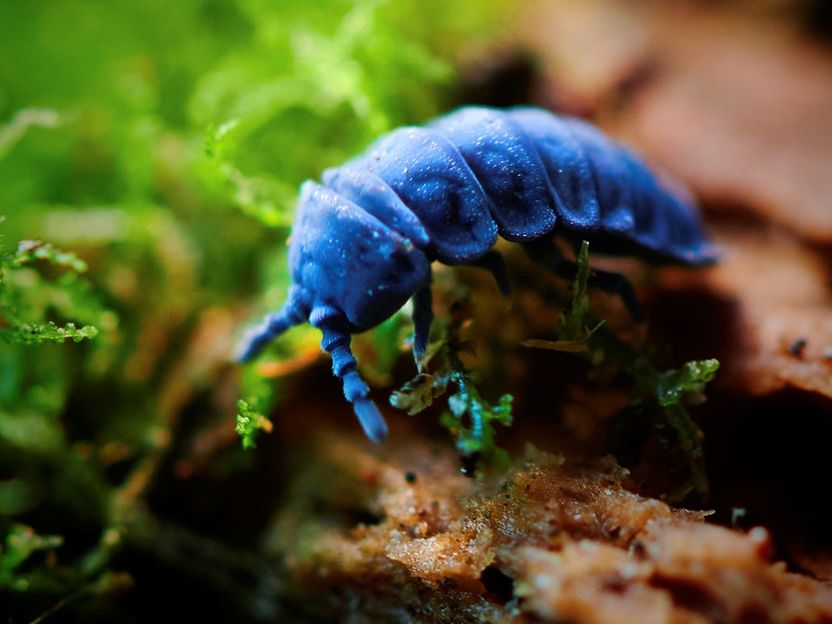Repelling disorder: What makes cholesterol-containing surfaces so repulsive?
The development of synthetic materials using the discovered principle is promising
Advertisement
Living organisms use powerful physical principles to control interactions at their surfaces. Researchers at the Leibniz Institute of Polymer Research Dresden, Leipzig University and TU Dresden have now discovered why cholesterol-containing surfaces can exhibit greatly reduced attachment of proteins and bacteria.

The Collembola Tetrodontophora bielanensis in its natural habitat
Stephan Floss, Leibniz-Institut für Polymerforschung Dresden/NATURE
The interdisciplinary team led by Carsten Werner had previously identified cholesterol as a component of the skin of widespread invertebrates (collembolae), which breathe through their skin and therefore need to protect it from contamination. In their paper published in Nature on June 22, 2023, the scientists have now elucidated a repulsive mechanism of cholesterol-containing surfaces. Using experiments, simulations and thermodynamic analyses, they were able to show how the spontaneous change in the orientation of interfacial cholesterol molecules creates an "entropic barrier" that makes cholesterol-containing surfaces repellent.
The development of synthetic materials using the discovered principle is promising, as it is important for many products and technologies to effectively minimize the attachment of biomolecules and bacteria. However, such "translation" of the effect to scalable, robust surface functionalization requires further research.
At the Leibniz Institute of Polymer Research Dresden (IPF), basic principles for new materials and their application in future technologies are being developed, with biology-inspired material concepts becoming increasingly important. The Chair of Biophysical Chemistry at Leipzig University works closely with the IPF on biomimetic materials. At the Cluster of Excellence Physics of Life of the TU Dresden, basic principles of the functionality of living matter are being explored.
Original publication
Other news from the department science

Get the chemical industry in your inbox
By submitting this form you agree that LUMITOS AG will send you the newsletter(s) selected above by email. Your data will not be passed on to third parties. Your data will be stored and processed in accordance with our data protection regulations. LUMITOS may contact you by email for the purpose of advertising or market and opinion surveys. You can revoke your consent at any time without giving reasons to LUMITOS AG, Ernst-Augustin-Str. 2, 12489 Berlin, Germany or by e-mail at revoke@lumitos.com with effect for the future. In addition, each email contains a link to unsubscribe from the corresponding newsletter.






























































